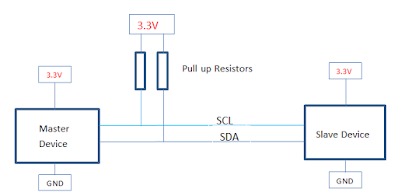Electronics Interview Questions and Answers Part-1
1. What is the purpose of LISN?
A line impedance stabilization network is a device used to measure conducted and radiated radio-frequency emission and susceptibility tests. as specified in various EMC test standards. Some test standards are CISPR, FCC, ISO, EN, RTCA DO-160, and MIL-STD 461D.
LISN is a low pass filter unit typically placed between AC or DC power source and EUT to create know impedance and to provide a radio frequency noise measurement port.
Electronics devices create noise current (Electromagnetic energy) and a certain portion of it will be conducted onto the power supply cord. In order to restrict the amount of interference DUT can couple back onto a power supply. Test labs measure these emissions and verify that they comply with specified limits. This helps to ensure that the local power supply remains relatively 'clean' and nearby devices won't be affected by the DUT.
Conducted emissions testing is usually performed on devices that connect to an AC power supply.
| Conducted Emission Block Diagram |
3. What is the frequency range for conduct emission testing?
The conducted emission frequency range is based on specific standards.
For FCC the frequency range is 450 kHz to 30 MHz
For CISPR 22 the frequency range is 150 kHz to 30 MHz
* FCC Federal Communications Commission
* CISPR International Special Committee on Radio Interference
4. What are the typical Failure Modes in Conducted and radiated emission?
There are a virtually unlimited number of ways that DUT can fail a radiated emissions test. Some samples are given below:
- Noise on the cabling
- Poor board grounding
- Non-optimized layer stack
- Ineffective board decoupling
- Poor component placement
- Poor signal integrity
- large current loops
- Signals close to the edge of the reference plane
- Critical nets change reference planes
- Poor decoupling capacitor placement and routing
- Lack of grounding for crystals
5. What is EMC Immunity testing?
EMC immunity testing measures the ability of a device to withstand different types of electromagnetic phenomena. Immunity testing is the opposite of emissions testing. Instead of measuring what's coming from DUT, immunity testing involves subjecting DUT to EM phenomena.
6. What are the EMC Immunity tests?
- ESD - IEC/EN61000-4-2
- Radiated Immunity - IEC/EN61000-4-3
- Electrical Fast Transient (EFT) - IEC/EN61000-4-4
- Surge - IEC/EN61000-4-5
- Conducted Immunity - IEC/EN61000-4-6
- Magnetic Field - IEC/EN61000-4-8
- Voltage Dips, Drops & Interruptions - IEC/EN61000-4-11/-29
7. Why do we need termination in electrical circuits?
Termination resistors are normally to prevent signal reflecting off the end of the transmission line.
Reflections at the ends of unterminated transmission lines cause distortion in the signal. Reflection is caused when the energy in the pulse propagation down the line is not absorbed by the load at the end of the line.
8. What is impedance matching?
In electronics, impedance matching is the practice of designing the input impedance of an electrical load or the output impedance of it's corresponding signal source to maximize the power transfer or minimize the signal reflection from the load.
Source impedance ZS= Load impedance ZL
9. How can we achieve I/O signal isolation?
Isolation is the electrical or magnetic separation between two circuits and often used to separate two distinct sections of a power supply. The isolation provides a barrier across which dangerous voltages cannot pass in the event of a fault or component failure.
- Inductive isolation (Mostly used in the power supply isolation)
- Capacitor isolation
- Optical isolation
- Digital isolators
10. What is CTR in Isolators?
The gain of the optocoupler is expressed as a Current Transfer Ratio (CTR).
CTR indicating the ratio of the output current (IC) to the input current (IF) and it's expressed in percentage.
CTR(%)=(IC/IF) x 100


